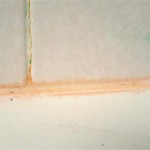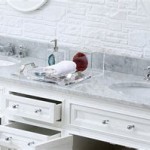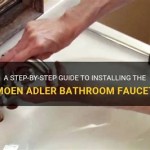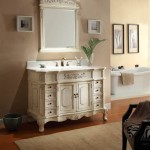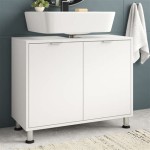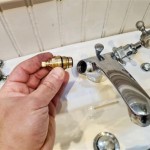How To Unclog a Bathroom Sink
A clogged bathroom sink is a common household nuisance, often disrupting daily routines and causing unnecessary frustration. Understanding the common causes of these blockages and knowing how to effectively clear them can save time and potentially avoid costly plumbing service calls. This article provides a comprehensive guide to diagnosing and resolving bathroom sink clogs using a variety of methods, ranging from simple home remedies to more involved techniques.
The primary culprits behind bathroom sink clogs are typically hair, soap scum, toothpaste, and small debris that accumulate over time. These materials bind together and stick to the interior walls of the drainpipe, gradually narrowing the passage and eventually forming a complete blockage. Regular maintenance and preventative measures can greatly reduce the likelihood of recurring clogs.
Identifying the Problem: Symptoms and Initial Checks
Before proceeding with any unclogging method, it is essential to accurately assess the situation. A slow-draining sink is an early indicator of a developing clog. If water pools in the basin for an extended period, it suggests a partial obstruction. A completely blocked sink, where water does not drain at all, signifies a more severe blockage. Another sign of a potential issue is a gurgling sound emanating from the drainpipe, which indicates trapped air struggling to escape.
The first step in troubleshooting is to visually inspect the sink drain opening. Remove the pop-up stopper, if applicable, and check for any visible clumps of hair or debris that can be easily removed by hand or with pliers. Wearing gloves during this process is recommended for hygiene purposes. A flashlight can be helpful to illuminate the drain and identify any obstructions further down.
Checking the overflow drain is also important. This small opening located near the top of the sink basin is designed to prevent overflow. However, it can also contribute to clogs. Debris can accumulate in the overflow drainpipe, restricting airflow and hindering drainage. Pouring a cup of water into the overflow drain may reveal whether it is blocked. If water does not drain properly, it suggests that this area may be part of the problem.
Simple Solutions: Hot Water and Baking Soda/Vinegar
For minor clogs, the simplest solution may be the most effective: hot water. Boiling water can help to dissolve soap scum and loosen other accumulated debris. It is crucial to exercise caution when using boiling water, especially with PVC pipes, as excessive heat can potentially damage them. For PVC pipes, using hot tap water is a safer alternative.
To use the hot water method, carefully pour a kettle or pot of hot (or boiling, for metal pipes) water down the drain. Allow the water to sit for several minutes to allow it to work on the clog. If the sink drains slowly, repeat the process. If the sink remains blocked after several attempts, move on to a more aggressive method.
A common and effective home remedy involves using baking soda and vinegar. This combination creates a chemical reaction that can help to break down clogs. First, pour approximately one cup of baking soda down the drain, followed by one cup of white vinegar. A fizzing reaction will occur. Allow the mixture to sit for at least 30 minutes, or preferably overnight, to allow the reaction to work on the clog.
After the waiting period, flush the drain with hot water. The baking soda and vinegar reaction should have loosened the debris, allowing it to be washed away. If the sink still drains slowly, repeat the process. If the baking soda and vinegar method proves ineffective, it indicates that the clog may be more stubborn and requires a different approach.
Advanced Techniques: Plungers and Plumbing Snakes
If simple solutions fail to clear the clog, a plunger is the next logical tool to employ. A standard cup plunger can be used for bathroom sinks. Before using the plunger, add enough water to the sink basin to cover the cup of the plunger. This creates a seal that will allow the plunger to generate suction and force to dislodge the clog.
Place the plunger cup firmly over the drain opening, ensuring a tight seal. Push and pull the plunger up and down vigorously for several minutes, maintaining the seal. Remove the plunger and check if the water drains. Repeat the process several times if necessary. If the sink has an overflow drain, it is important to block it with a wet cloth during plunging to maximize the suction effect on the main drain.
A plumbing snake, also known as a drain auger, is a flexible tool designed to reach further down the drainpipe and break up or retrieve clogs. Plumbing snakes are available in various lengths and types, ranging from simple hand-cranked models to powered versions. For bathroom sinks, a smaller hand-cranked snake is typically sufficient.
To use a plumbing snake, carefully insert the end of the snake into the drain opening. Rotate the handle to advance the snake down the drainpipe. If you encounter resistance, continue to rotate the handle to break up the clog or hook onto it. Once you feel that you have dislodged or hooked the clog, carefully retract the snake, pulling out any debris that is attached. Clean the snake and repeat the process until the drain flows freely. Wearing gloves during this process is highly recommended.
Deeper Dive: Removing and Cleaning the P-Trap
If the preceding methods prove unsuccessful, the next step involves accessing and cleaning the P-trap. The P-trap is the curved section of pipe located under the sink. It is designed to trap debris and prevent sewer gases from entering the bathroom. The P-trap is also a common site for clogs to accumulate.
Before proceeding, place a bucket or pan under the P-trap to catch any water and debris that may spill out. Loosen the slip nuts that connect the P-trap to the drainpipes using a wrench. Carefully remove the P-trap, being mindful of any remaining water inside. Once the P-trap is removed, inspect it for any blockages. Remove any debris that is present, using a wire or small brush if necessary. Rinse the P-trap thoroughly with water to ensure it is completely clear.
While the P-trap is removed, it is also a good opportunity to inspect the tailpiece (the section of pipe that connects the sink drain to the P-trap) and the drainpipe leading from the P-trap to the wall. These sections of pipe can also accumulate debris. Use a plumbing snake or a wire to clear any blockages. Once all components are cleaned, reassemble the P-trap, ensuring that the slip nuts are tightened securely but not overtightened, which could damage the pipes.
After reassembling the P-trap, run water into the sink to check for leaks. If any leaks are present, tighten the slip nuts further. If the leaks persist, the slip nuts or the P-trap itself may need to be replaced. A small amount of Teflon tape applied to the threads of the slip nuts can also help to create a tighter seal.
Preventative Measures: Maintaining a Clear Drain
Preventing future clogs is crucial to avoiding recurring problems. Several preventative measures can be implemented to maintain a clear drain. Regularly flushing the drain with hot water can help to dissolve soap scum and other debris before they accumulate. Avoid pouring grease or oil down the drain, as these substances solidify and contribute to clogs.
Installing a drain strainer or mesh screen can effectively catch hair and other debris before they enter the drainpipe. These strainers are inexpensive and easy to install. They should be cleaned regularly to prevent them from becoming clogged themselves. Consider periodically pouring a mixture of baking soda and vinegar down the drain as a preventative maintenance measure.
Educating household members about proper drain usage is also important. Encourage them to avoid flushing non-flushable items down the drain, such as cotton balls, tissues, and feminine hygiene products. By adopting these preventative measures, the likelihood of future bathroom sink clogs can be significantly reduced, saving time and potentially avoiding costly plumbing repairs.

How To Unclog A Bathroom Sink Hana S Happy Home

5 Natural Ways To Unclog A Bathroom Sink Hiller How

How To Unclog A Sink The Right Way

How To Unclog A Slow Running Bathroom Sink Drain 10 Options

How To Unclog A Bathroom Sink Quickly
How To Unclog A Sink 4 Easy Ways

How To Unclog A Bathroom Sink Hana S Happy Home

Expert Plumbing Tip How To Unclog A Bathroom Sink Garden City Useful Information

How To Unclog A Bathroom Sink The Home Depot

How To Keep Drains From Clogging Bathroom Sink Drain Stopper Diy
Related Posts
